With one child at Auburn University, we’ve made numerous trips to visit the town and campus. Each time we arrive, we find something new to see and do, besides football tailgating or making trips to Target and Walmart to stock up on dorm-room supplies.
Auburn University
With over 24,000 students, Auburn University is a member of the SEC. That means great football and tailgating! On an academic level, Auburn is one of only 17 land, sea, and space-grant universities.
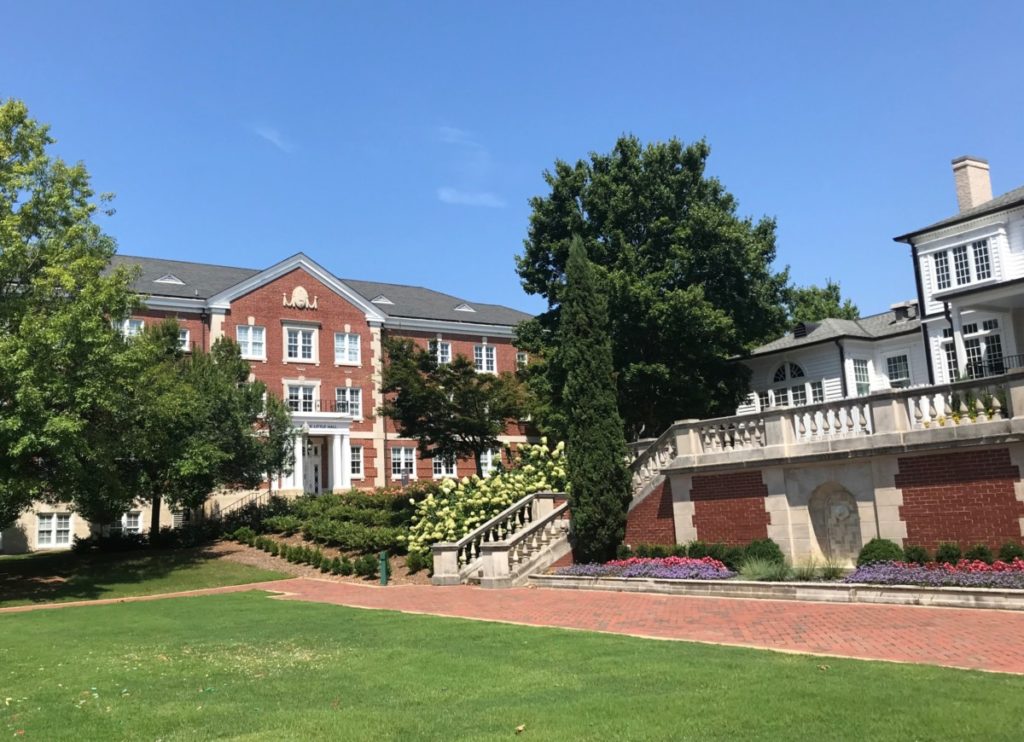
Founded in 1856 as East Alabama Male College, the United Methodist church operated the college until 1872. When the state took it over, the name changed to Agricultural & Mechanical College, and later to Alabama Polytechnic Institute. The name didn’t become Auburn University until 1960!
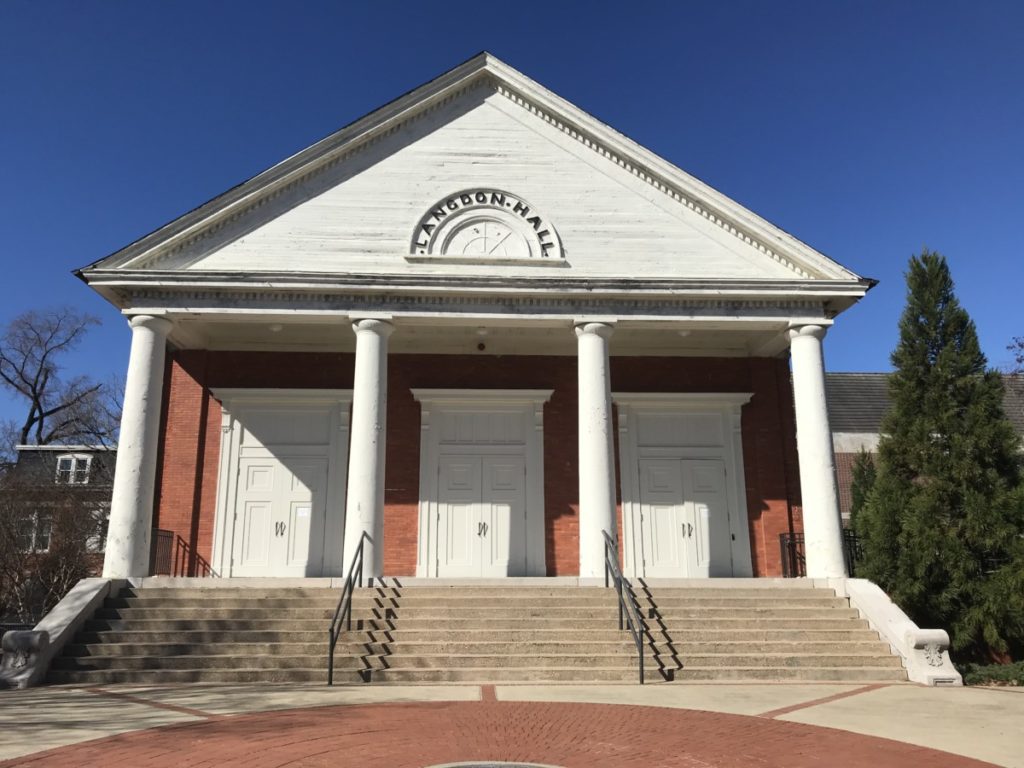
Surprisingly, the oldest building on campus didn’t sit on the campus. Built around 1846, Langdon Hall originally served as a chapel for the Masonic Female College and wasn’t moved to Auburn’s campus until 1883. Embedded in the bricks in front of the building, you’ll see Auburn’s seal. If you step on the seal, bad things can happen including not graduating in four years and having seven generations of University of Alabama fans!
Davis Arboretum
A small treasure on Auburn’s campus is the 13-acre Donald E. Davis Arboretum. With two miles of stroller-friendly walking trails, visitors see native plant species from all five regions in Alabama: Highland Rim, Cumberland Plateau, Alabama Valley and Ridge, Piedmont Upland, and East Gulf Coastal Plain.
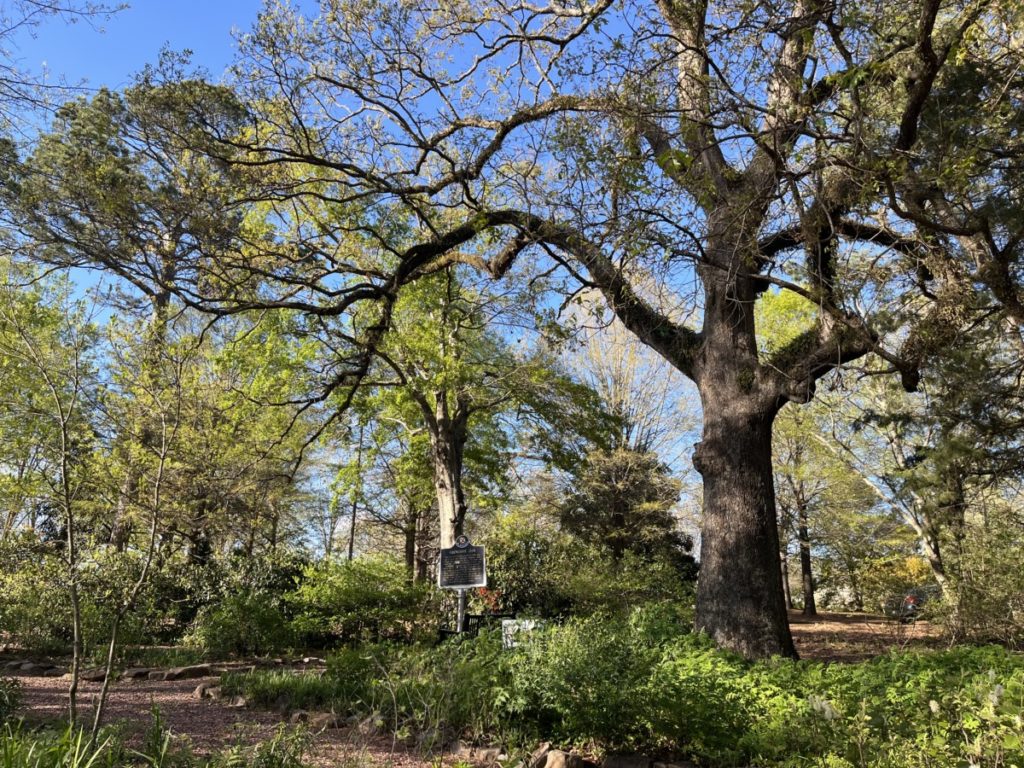
Tall oaks, including the 170-year-old Founders Oak, graced the pathways. We wandered to a rain garden, bog, and wildflower meadow before arriving at a dune area with sea oats. The gardens also featured a pond, bridges, and even a small waterfall. Known for azaleas and rhododendron, Davis Arboretum hosts an annual azalea festival. Regardless of the season, students can find quiet places to relax at the arboretum that is free of charge and open every day of the week.
Downtown
Auburn boasts a cute downtown area adjacent to the campus. Popular restaurants include The Hound for hamburgers and Taco Mama for margaritas. And, there’s no shortage of coffee spots to get caffeine while studying with Coffee Cat, Well Red, and Ross House, all within walking distance. The oldest downtown establishment is Toomer’s Drugs, circa 1896, with its famous lemonade. Auburn loves traditions so it’s no wonder that students roll the trees across from Toomer’s with toilet paper after sports victories.
Jule Collins Smith Museum of Fine Art
Another on-campus gem is the Jule Collins Smith Museum of Fine Art. Open every day of the week except Monday, the museum offers free admission to the public. When I immediately recognized the Chilhuly in the atrium, the staff member told me Amber Luster contains over 600 individual pieces of hand-blown glass. To clean it periodically, the staff have to disassemble the entire exhibit completely.
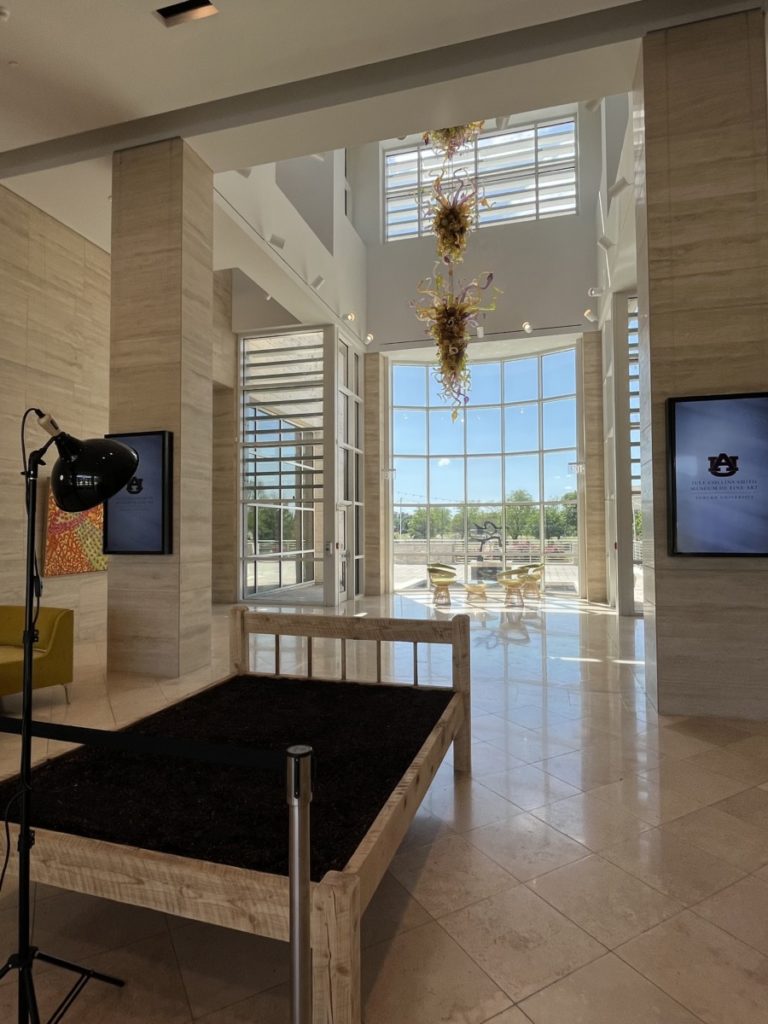
One side of the museum featured exhibit space while the other side included a gift shop and a restaurant. While workers were in the process of setting up FretHaus featuring guitars created by Auburn’s School of Industrial and Graphic Design students, we saw an exhibit by Auburn faculty members as well as Radical Naturalism, which focuses on man and nature.
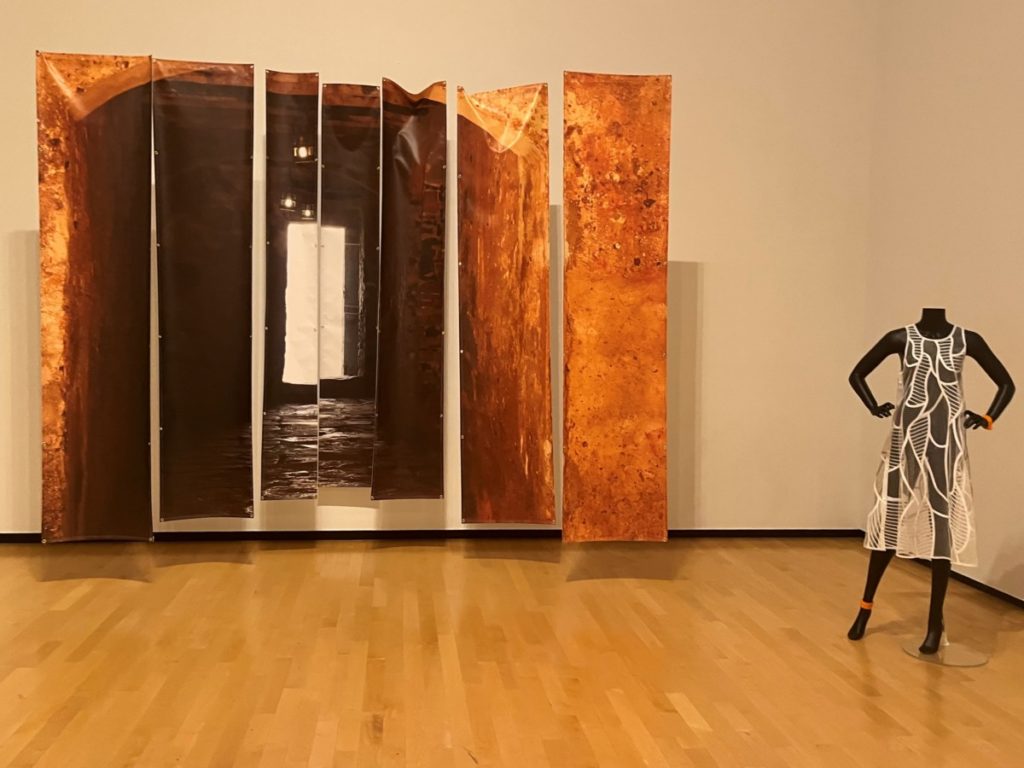
Outside, gardens provided photo opportunities for weddings and proms, as well as a few outdoor sculptures.
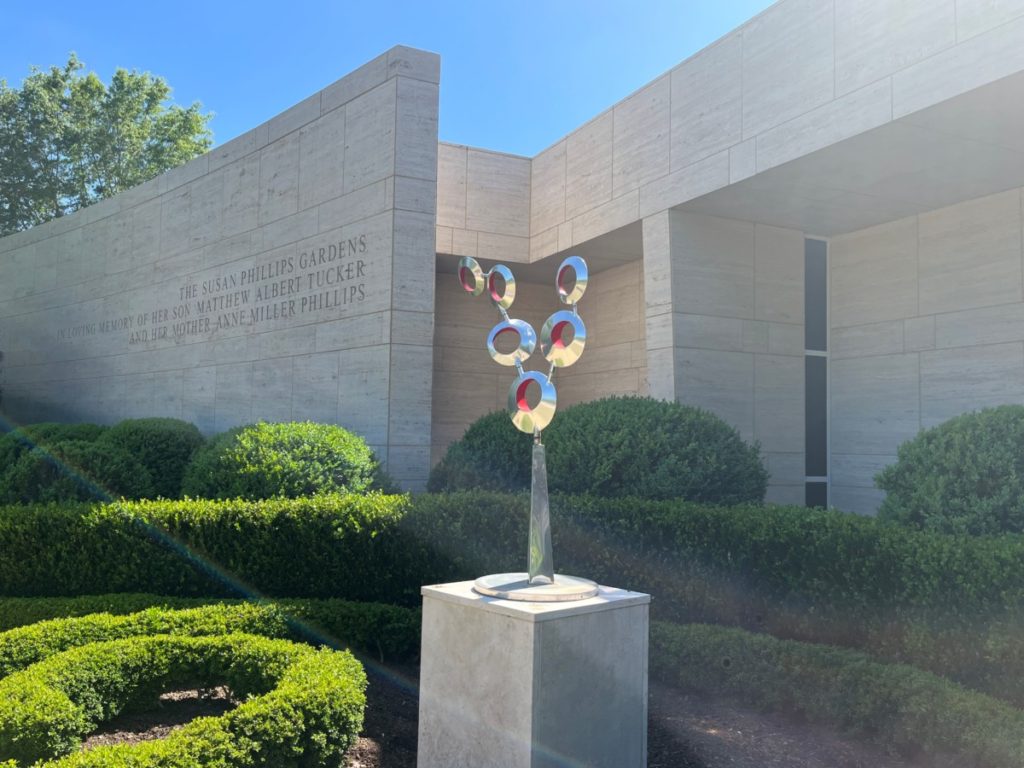
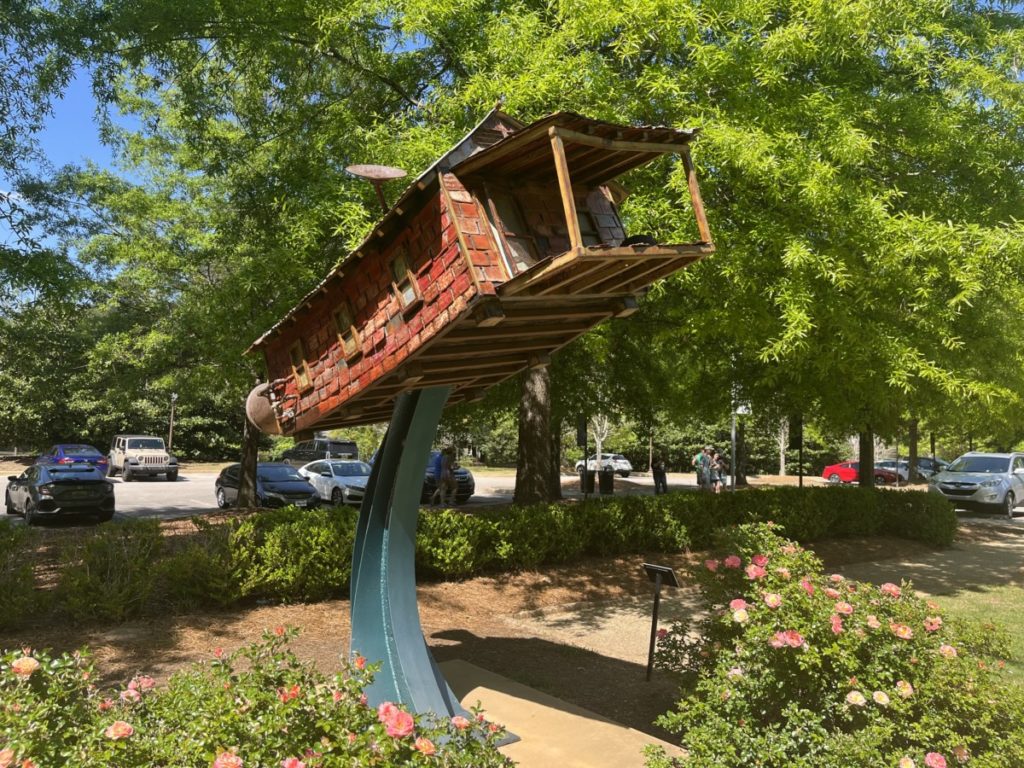
Kreher Preserve and Nature Center
We only had a few minutes left in our day to tour the Kreher Preserve and Nature Center. Only three miles north of the campus, the preserve doesn’t charge admission and offers 1-mile, 2-mile, and 5-mile walking trails.
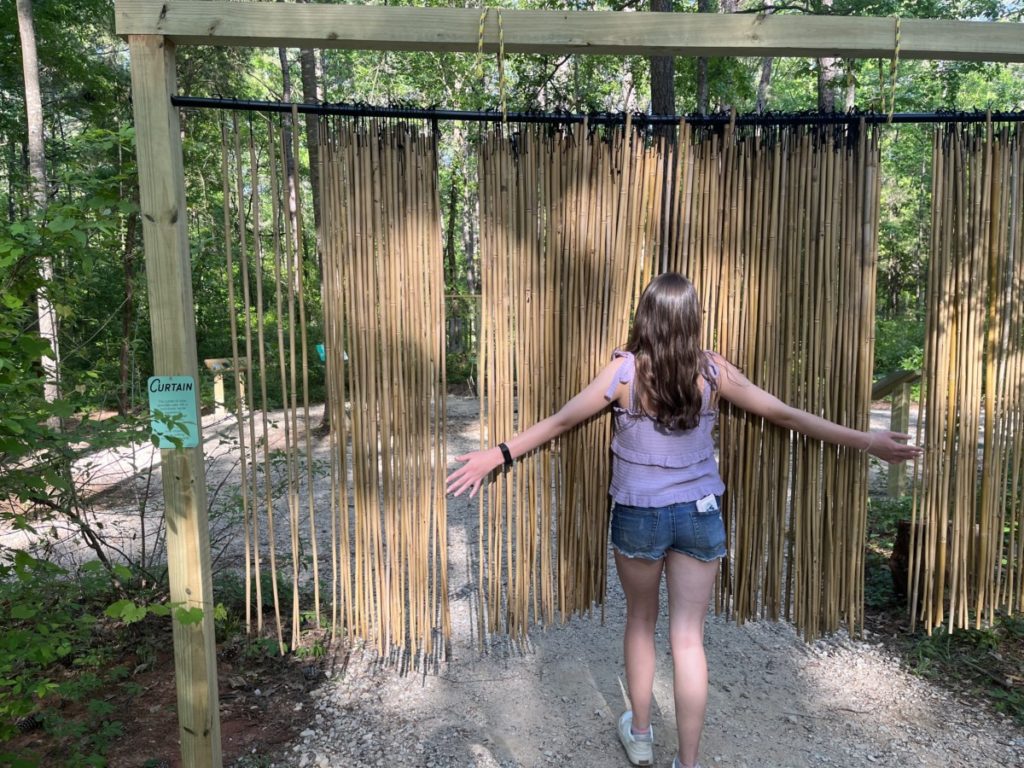
The sensory forest area focused on all seven senses. Seven? In addition to sight, sound, taste, touch, and smell, the exhibit featured vestibular (balance) and proprioception (body awareness) activities. Presented by the Auburn Therapy and Learning Center (TLC), the gardens offered sensory exercises including a touch path with different textures, a xylophone to play, and a sensory garden. The garden featured plants full of different colors (sight), textures (touch), and scents (smell). They even had plants like spearmint and chives to eat (taste).
